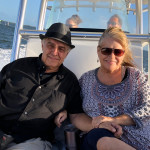267 acres hosted by Blue Sky C.
6 glamping pitches · 10 motorhome/tent pitches
Amazing views
Hipcampers say this spot has amazing views.
Staff verified
Accuracy verified by Hipcamp's on-the-ground team.
Romantic
Recent Hipcampers say this Hipcamp is romantic.
Off-leash friendly
Pets can be off-leash at some sites.
Activities
Biking
Hiking
Horseback riding
Off-roading (OHV)
Natural features
Desert
Forest
Mountainous
Select a unit
Filter by
Loading units...
94% 





694 Ratings · 431 reviews
Shane M.recommends
December 16, 2024
Lunette Hut
Amazing Time!
Would absolutely recommend! My wife, dog and myself really enjoyed our stay here. We definitely overpacked because they really have everything you need there. The wagons were clean, inviting and cozy. We truly enjoyed every minute of our stay. We will definitely be back!
Riccardo P.recommends
December 4, 2024
Blue Sky Dispersed Camping
We found the dispersed camping area easily. We only stayed one night and we enjoyed our time the off-the-grid experience. We used the restrooms and shower which could use some love but they worked for what we needed. Hot water smells funky though. The Wi-Fi works well in the building but not so much in the dispersed camping area. Seeing a small plane land and take off in the morning was super cool.
Ever C.recommends
December 1, 2024
Blue Sky Dispersed Camping
It was great experience!! 4 nights we stayed we were safe and peaceful 😍
Lindsay And Rich S.recommends
November 19, 2024
Blue Sky Dispersed Camping
Remote, Cool and Conscious
We arrived sitting the day in a Sunday. No one was there or the next morning. The view of saint hold and sweet was very prevail and the night sky was awesome.
At first it seemed a bit scrappy and other mention lotta of barking dogs at night. Neither wad true for us. All the buildings were open with a few lounge areas, kitchens and beautiful bathrooms and showers! The glamping wagons are tres cool and clean.
Looks like the ninprofit does supportive work for the local community too.
The best park was the retro but country Buckhorn Restaurant and cafe. High energy smart bartender happy to share lots of great info about almost anything. He create a tricked out Cadillac Margarita for me that was amazing.
Daeun K.recommends
November 15, 2024
Blue Sky Dispersed Camping
We really enjoyed the campsite and view was amazing!
Eric S.recommends
September 26, 2024
Quonset Hut
Adventure Motorcycle oasis- perfect
Loved the tent camping - yurt-thing. Clean restrooms/showers, comfortable beds with linens, great location, friendly coordinator! Perfect adventure motorcycle trip stop-off. We will be back for sure!
Hosted by Blue Sky C.
Joined in June 2016Response time: Within 24 hours
Things to do nearby
More camping spots nearby
Campers also viewed...
Safety at Hipcamp
Hipcamp is created with ❤️ and hope for our future.











